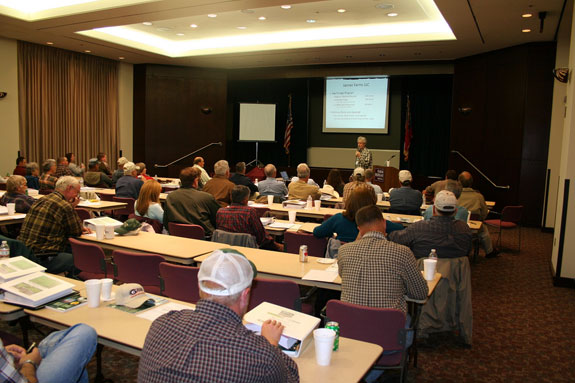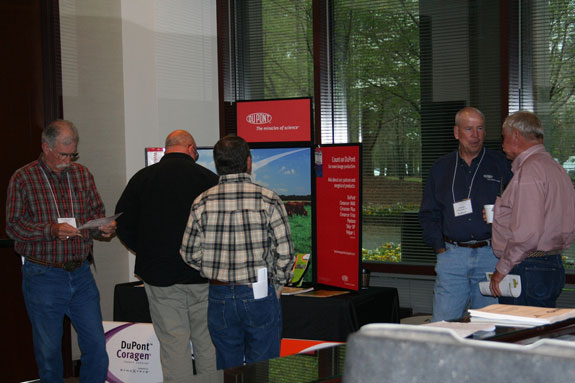The overriding theme from this year’s Southeast Hay Convention was “Quality hay makes dollars and sense.”This year’s Southeast Hay Convention (formerly known as the Hay Production School) was our fourth annual event.
Nearly 100 attendees from nine states and as far away as Puerto Rico came to the Georgia Farm Bureau Headquarters in Macon on March 29 and 30 to participate.
The program was organized and taught by 10 experts from a variety of disciplines, including specialists in forage crops, animal nutrition, livestock economics, engineering, weed control, insect management, soil fertility, plant breeding and weather risk management.
The two-day program included 20 modules that provided an A-to-Z coverage of hay production and marketing.

One of the most important presentations was on the fundamentals of the current market. Attendees learned that national declines in hay acreage, strengthening demand from livestock sectors and high grain prices are likely to provide solid footing for the value of high-quality hay in 2011.
Though hay “quality” means something different to each market segment, attendees at the Southeast Hay Convention learned how to segment their hay products to meet market demands.
Specific information was provided to attendees on how demands differ between the major livestock systems (i.e., dairy, beef, horses, etc.).
For example, horse owners place greater value on color, dust/mold content and texture of hay, whereas dairy producers value digestibility and energy concentration.
The program also included an overview of a new Relative Forage Quality (RFQ)-based hay categorization system.
This RFQ-based categorization attempts to quantify the differences in quality, while accounting for quality differences within and across the different forage species.
Researchers and specialists have identified ranges in RFQ that align with different animal class requirements. Within these ranges, three categories of hay can be identified for each of the major livestock systems (e.g., dairy, beef, horses, etc.).
By using this categorization system, hay producers can identify hay lots that are more nutritious and of higher value. 
As a result of this focus on quality-based marketing, one of the highlights of the training was the discussion of the most important steps to maximizing the RFQ score of a hay crop.
However, producers were also concerned about keeping costs low. Other highly rated segments included those that emphasized the fundamentals of fertilization and how a fertilization program can be best fine-tuned.
Though the 2011 Southeast Hay Convention is another in the record books, you can still benefit from the information from this event. You can access printable versions of the presentations and individual segments from the over 700 pages of materials in the notebook.
Just visit the link to the Southeast Hay Convention’s webpage on the University of Georgia’s Forage Website.
While on our website, sign up for email announcements about the dates and location for the 2012 Southeast Hay Convention. FG
Dr. Dennis Hancock
Extension Forage Specialist
University of Georgia
Photos by Dennis Hancock.












